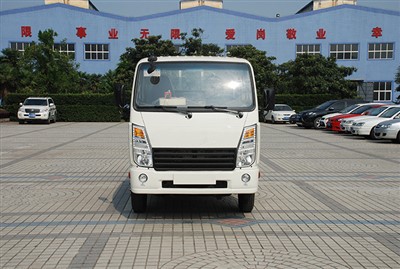Understanding Street Sweepers: Your Complete Guide

Introduction
Street sweepers are essential vehicles that help maintain clean and orderly urban environments. These powerful machines play a crucial role in keeping streets free of debris, litter, and pollutants, ensuring the safety and aesthetics of communities. In this comprehensive guide, we will explore the types, functions, benefits, and technologies associated with street sweepers, as well as provide practical tips for their effective deployment and maintenance.
What is a Street Sweeper?
A street sweeper is a specialized vehicle designed for cleaning paved streets and other surfaces. Operating with brushes, suction systems, and water sprays, these machines effectively remove dirt, grime, leaves, and other debris. Street sweepers are commonly used by municipalities, commercial property owners, and private contractors to keep public and private areas tidy.
History of Street Sweepers
The history of street sweepers dates back to the early 19th century, with the first manual sweepers developed in the 1840s. However, motorized versions came into existence in the early 20th century, revolutionizing street cleaning efficiency. Over the years, technology has advanced, leading to modern street sweepers with improved designs and eco-friendly features.
Types of Street Sweepers
Street sweepers come in various types, each designed for specific tasks and environments. Here are the most common categories:
1. Vacuum Sweepers
Vacuum sweepers use powerful suction to remove debris and dust from road surfaces. They are ideal for urban areas where fine particles must be effectively controlled.
2. Mechanical Broom Sweepers
These sweepers use rotating brushes to collect debris, which is then stored in a hopper. They are effective for larger debris such as leaves and larger litter.
3. Regenerative Air Sweepers
This type combines both vacuum and mechanical sweeping. It uses high-velocity air to lift dirt and debris, making them suitable for a variety of surfaces.
4. Compact Sweepers
Compact street sweepers are smaller and designed for narrow streets and tight spaces. They offer flexibility and maneuverability for urban cleaning in crowded areas.
5. Combination Sweepers
Combination sweepers can perform both vacuum and mechanical functions, making them versatile for different cleaning needs. They are commonly used for city street cleaning.
How Street Sweepers Work
Street sweepers operate through a combination of mechanical and suction methods to clean effectively. The typical process includes:
The Cleaning Process
- Preparation: Operators inspect the sweeper to ensure it is in working order.
- Sweeping: The sweeper is driven along the street, where rotating brushes collect debris into a hopper.
- Suction: The vacuum system removes fine particles and dust while sweeping.
- Disposal: The collected debris is transported to a disposal site or recycling facility.
Technological Advancements in Street Sweeping
Recent innovations have drastically improved street sweepers’ efficiency and sustainability. Some notable advancements include:
- Environmental Sensors: Many modern street sweepers are equipped with sensors that optimize cleaning paths based on real-time environmental conditions.
- Electric Sweepers: Electric-powered models are gaining popularity for their reduced emissions and quieter operation.
- Automated Systems: Some street sweepers now come with GPS technology and automated controls, enhancing their operational efficiency.
Benefits of Street Sweeping
Regular street sweeping provides numerous benefits for urban areas, including:
1. Improved Public Health
By removing debris and pollutants, street sweeping helps reduce the risk of disease-carrying pests and improves air quality.
2. Environmental Protection
Street sweepers prevent pollution from entering storm drains and waterways, significantly reducing litter and contaminants in natural habitats.
3. Enhanced Aesthetics
Clean streets create an appealing environment, which can boost property values and enhance community pride.
4. Increased Safety
Eliminating debris and loose materials on roads reduces hazards for drivers, cyclists, and pedestrians.
5. Cost Efficiency
Regular street sweeping can lead to lower maintenance costs for roads by preventing the buildup of damaging elements such as leaves and dirt.
Practical Tips for Effective Street Sweeping
To maximize the effectiveness of street sweepers, follow these practical tips:
1. Schedule Regular Sweeping
Establish a consistent sweeping schedule based on traffic volume and geographical needs to keep streets clean.
2. Train Operators
Ensure that street sweeper operators are well-trained in machine operation and maintenance for optimal performance.
3. Monitor Environmental Conditions
Consider local weather patterns when planning sweeping schedules, as heavy rainfall or windy days may affect cleaning efforts.
4. Use Proper Equipment
Select the right type of street sweeper based on specific cleaning needs to enhance efficiency.
5. Encourage Community Involvement
Engage the community in keeping streets clean by promoting litter reduction initiatives and informing citizens about scheduled sweeping days.
Challenges in Street Sweeping
Although street sweeping offers many benefits, there are challenges that municipalities and companies face:
1. Financial Constraints
Budget limitations can hinder timely maintenance and scheduling of sweeping operations.
2. Weather-Related Issues
Adverse weather conditions can impede sweeping operations and affect the efficiency of cleaning efforts.
3. Equipment Maintenance
If not properly maintained, street sweepers can suffer from mechanical issues, reducing their effectiveness.
Regulations and Standards for Street Sweeping
Many regions have established regulations regarding street cleaning to promote public health and environmental protection. These regulations may include:
1. Frequency of Sweeping
Some municipalities mandate the frequency of street sweeping based on traffic density and pollution levels.
2. Disposal of Collected Debris
Proper disposal methods must be observed to avoid land pollution and ensure compliance with environmental laws.

3. Operator Training Requirements
Many local governments require operators to undergo specific training to ensure safe and efficient cleaning operations.

Future Trends in Street Sweeping
As urban areas continue to grow, the demand for effective street cleaning solutions will increase. Future trends may include:
1. Integration of Smart Technology
Utilizing AI and data analytics can help cities optimize their sweeping routes and timing.
2. Increased Focus on Sustainability
The trend towards sustainability will lead to greater adoption of electric and hybrid street sweepers.
3. Community-Based Initiatives
More community engagement in street cleaning efforts, such as neighborhood clean-up days, may become common.
Frequently Asked Questions (FAQ)
1. How often should streets be swept?
The frequency of street sweeping depends on factors like traffic volume, litter levels, and local regulations. Typically, urban streets may require weekly or bi-weekly cleaning, while residential areas might need monthly services.
2. What type of street sweeper is best for my area?
Choosing the right street sweeper depends on the street type and the kind of debris present. Vacuum sweepers are excellent for urban areas, while mechanical broom sweepers are ideal for larger debris.
3. Can street sweepers help in flood prevention?
Yes, regular street sweeping can help clear drains and reduce the amount of debris entering the stormwater system, which can mitigate flooding risks.
4. Are street sweepers environmentally friendly?

Modern street sweepers are designed to be more environmentally friendly, with models that feature electric engines and efficient dust suppression systems.
5. How much does a street sweeper cost?
The cost of a street sweeper varies depending on type and features but typically ranges from $100,000 to $400,000 for new models.
6. What maintenance do street sweepers require?
Street sweepers require regular maintenance, which includes checking and replacing filters, inspecting brushes, and ensuring the vacuum system is functioning properly.
